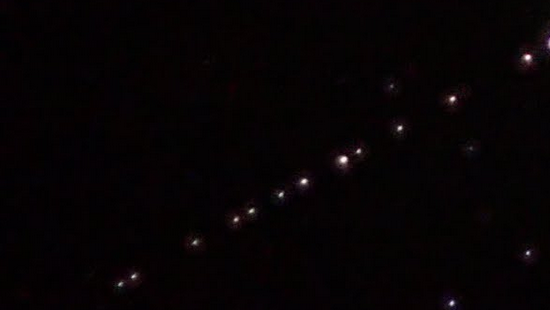Kristina Schiavone, JD ’21, GSLC Research Council Member
The Global Space Law Center is pleased to introduce the first of two articles in a series on mega-constellations. Each article will address the scientific communities growing concerns, as well as, the Federal Communication Commission (“FCC”) licensing requirements for mega-constellations.
Introduction
Sadly, Earth’s skyline may look a bit different in years to come with the addition of mega-constellations. While many companies have taken a break during this turbulent time, the space industry has picked up speed. SpaceX is moving forward on their mission to build the world’s largest internet mega-constellation, dubbed Starlink. In 2019, SpaceX launched its first set of sixty (60) satellites, and as of today, there are 951 satellites in orbit. Starlink’s goal is to bridge the gap in the “digital divide,” eventually providing broadband internet access to developing and underdeveloped areas around the world.
The Federal Communication Commission
The FCC is the agency responsible for licensing mega-constellations. In an effort to prevent collisions, in April 2020, the FCC updated their Orbital Mitigation Rules for satellites. As a result, applicants are now required to include numerical values estimating collision risks, post mission disposal success, causality of re-entry, trackability, and general operations in their licensing applications. Even though the FCC is taking the necessary steps to prevent harm in space, there may be a bigger concern for some lurking amongst the stars.
The Scientific Community Responds
Astronomers are voicing their concerns about the brightness and transmission signals of a given satellite. The amount of light each satellite projects is causing significant streaking in astrological photos. As a result, the quality, and amount of data available to scientists has been significantly reduced. Additionally, the out-of-band signals in allocated radio astronomy bands interferes with radio telescope observations. In response to the brightness concerns, SpaceX launched a prototype, DarkSat Satellite, equipped with an anti-reflective coating. Although innovative and proactive, the prototype still wreaked havoc on astronomers and astrophysicists alike.
Even with scientists growing concerns, the FCC authorized Amazon’s Project Kuiper mega-constellation application in 2020. The only condition was that the projected 3,236 satellites could not interfere with other satellites. The non-interference requirements adopted on July 29, 2020 addressed radio astronomy interference and noted that it was not a condition to the authorization, but that Kuiper should be aware of the potential interference and communicate with the National Science Foundation to properly coordinate their activities.
Where Do We Go From Here?
Currently, there is no binding international laws or regulations that can dictate how these mega-constellations should operate in orbit and there is nothing to limit the FCC from granting permission, so long as, companies agree to abide by the new regulations and avoid interference. As more companies receive FCC licenses to launch their own mega-constellations, the loud cry of astronomers seems to be taking a backseat. Agencies, like the FCC, are becoming more proactive in debris mitigation guidelines, yet, at the same time, they are becoming more reactive to the concerns of the scientific community. Companies, like SpaceX, are trying to improve their technology in the hopes that new developments will create less interference; however, this still seems secondary to the drive to bridge the “digital gap.” This begs the question: should the FCC wait to authorize more licenses for mega-constellations until an international agreement is reached? Of course, it is important to note that international agreements are hard to come by and waiting for a solidified plan is not a great business tactic. In a world where most communications are conducted online, the need for more broadband is increasing, but does that mean other professionals should take a backseat to the use of outer space?
Please leave your thoughts and comments in the comment section below.

